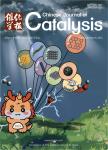Recent progress on photocatalysts with wide visible light range absorption for heterogeneous water splitting
Recent progress on photocatalysts with wide visible light range absorption for heterogeneous water splitting作者机构:Dalian Institute of ChemicalPhysicsChinese Academy of Scieneces
出 版 物:《催化学报》 (Chinese Journal of Catalysis)
年 卷 期:2014年第35卷第9期
页 面:1431-1432页
核心收录:
学科分类:081704[工学-应用化学] 07[理学] 081705[工学-工业催化] 0817[工学-化学工程与技术] 08[工学] 0703[理学-化学] 070301[理学-无机化学]
主 题:可见光响应 光催化剂 分解水 光吸收 水分解制氢 太阳能驱动 异质 环境污染问题
摘 要:Solar-driven water splitting for hydrogen production is an ideal way to solve the problems of the energy crisis and environment pollution, and is considered as the “Holy Grail of chemistry [1]. Typically, photocatalytic water splitting can be divided into three processes: (1) photoabsorption and photoexcitation of the semiconductor, (2) the excited carriers separate and migrate to the surface of photocatalyst, and (3) reactions of the carriers with water to produce H_2 and O_2. From the viewpoint of commercial application, a promising photocatalyst should satisfy both the requirements of a correct band structure (which can drive the water splitting half reactions), and harvest light in a wide visible light range and possess good photo-stability. To increase visible light utilization, various strategies have been developed, which can be generally described as decreasing the conduction band energy, increasing the valence band energy, or mediating the positions of conduction band and valence band simultaneously. The types of the reported visible light responsive photocatalysts can be classified as cation-doped photocatalysts, anion-doped photocatalysts, and solid solution photocatalysts, etc [2].



